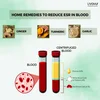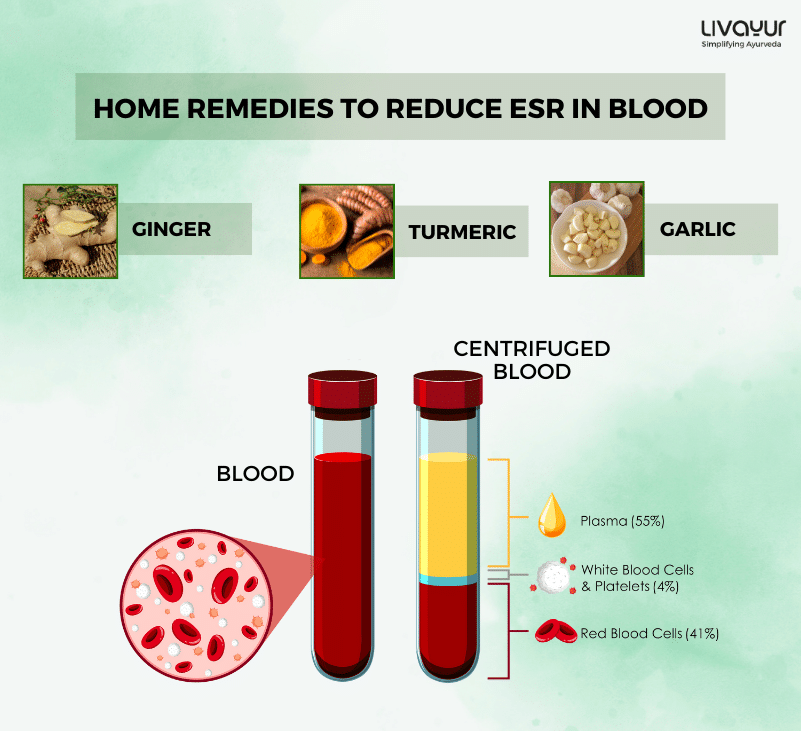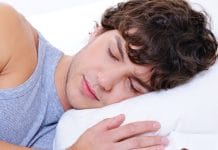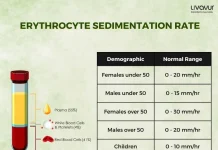This article is reviewed by Livayur’s Team of experts.
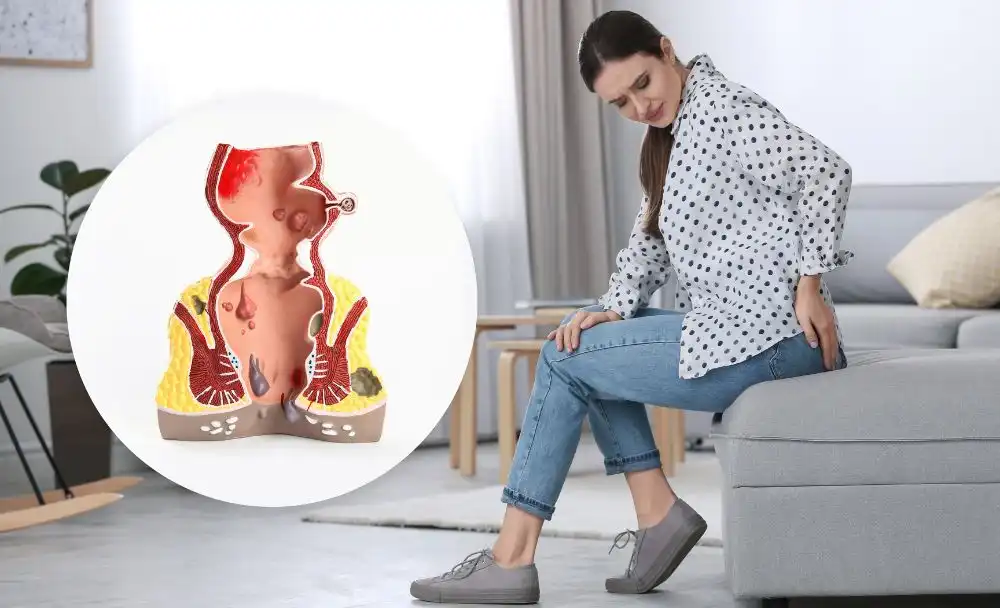
Haemorrhoids can be an overwhelming condition, causing significant discomfort and impairing quality of life. Unfortunately, it has high prevalence rates in India, affecting both men and women. Experts suggest that haemorrhoids will affect at least 50 percent of the population at some point in life by the age of 50, while roughly 5 percent of the population suffers from the condition at any point of time [1]. While haemorrhoids can affect both genders, women tend to have different experiences in terms of the causes as well as the progression of the condition. To effectively deal with it, requires a better understanding of the condition.
In Ayurveda, haemorrhoids are known as “Arsha” and are categorized as a condition arising due to imbalances in the doshas (Vata, Pitta, and Kapha) along with improper diet and lifestyle. Ayurvedic treatment for haemorrhoids focuses on balancing these doshas, improving digestion, and promoting overall well-being.
Female Haemorrhoids Symptoms
While some symptoms may be more commonly associated with one gender, they are not strictly unique to women. Here’s a detailed overview of the symptoms [2]:
- Pain or Discomfort: Haemorrhoids can cause varying degrees of pain or discomfort, which may range from mild to severe. Pain can be particularly pronounced during bowel movements or when sitting for extended periods.
- Bleeding: One of the most common symptoms of haemorrhoids is bright red blood on the toilet paper, in the toilet bowl, or on the stool after a bowel movement. This bleeding occurs due to irritation and inflammation of the swollen veins.
- Itching and Irritation: Haemorrhoids can lead to itching and irritation in the anal area. This discomfort is often caused by the mucus and stool residue that can accumulate around the haemorrhoids.
- Swelling and Inflammation: Swollen hemorrhoidal tissue can cause a visible lump or bulge around the anus. This swelling can be both internal (inside the rectum) or external (outside the anus).
- Prolapse: Internal haemorrhoids can sometimes prolapse or protrude outside the anus. These prolapsed haemorrhoids can cause pain and discomfort, and they may need to be gently pushed back inside the rectum [3].
- Mucus Discharge: Some individuals with haemorrhoids may experience a mucus discharge from the anus. This discharge can lead to itching and irritation.
- Difficulty Cleaning: Haemorrhoids can make it difficult to clean the anal area thoroughly after bowel movements. This can contribute to discomfort and itching.
- Sensation of Incomplete Bowel Movement: People with haemorrhoids might feel like they haven’t fully emptied their bowels after a bowel movement, even if they have.
- Thrombosis: External haemorrhoids can sometimes develop blood clots, causing a painful condition known as thrombosed haemorrhoids. These clots can lead to severe pain and swelling around the anus.
Female Haemorrhoids Causes
Several factors can contribute to the development of haemorrhoids and these include [4,5]:
- Straining During Bowel Movements: One of the primary causes of haemorrhoids is straining during bowel movements. This can occur due to constipation, hard stools, or spending excessive time on the toilet.
- Chronic Constipation: Infrequent or difficult bowel movements can lead to increased pressure in the rectal area, contributing to the development of haemorrhoids.
- Diarrhoea: Persistent diarrhoea can also lead to haemorrhoids. Frequent bowel movements and the irritation caused by loose stools can contribute to anal inflammation.
- Pregnancy: The pressure of the growing uterus on the pelvic veins, as well as hormonal changes, can contribute to the development of haemorrhoids during pregnancy.
- Obesity: Excess body weight can put additional pressure on the pelvic area and increase the risk of developing haemorrhoids.
- Heavy Lifting: Regularly lifting heavy objects can strain the abdominal and pelvic muscles, increasing the risk of haemorrhoids.
- Aging: As people age, the connective tissues that support blood vessels can weaken, making them more susceptible to swelling and inflammation.
- Genetic Predisposition: Some individuals may have a genetic predisposition to developing haemorrhoids due to factors like weak vein walls or poor blood vessel elasticity.
- Sedentary Lifestyle: Lack of regular physical activity can contribute to constipation and poor circulation, both of which are risk factors for haemorrhoids.
Female Haemorrhoids Diagnosis

Haemorrhoids are typically diagnosed by assessing symptoms and conducting a physical examination. Medical history is gathered to understand symptoms like pain, bleeding, and discomfort. During the physical exam, the healthcare provider visually inspects the anal area for external signs of swelling and may perform a digital rectal examination to detect internal haemorrhoids.
For a more detailed assessment, tools like anoscope, sigmoidoscope, or proctoscope can be used to examine the inside of the rectum. Additional tests, like a colonoscopy, might be recommended to rule out other causes of bleeding. Accurate diagnosis by a healthcare professional is crucial as symptoms of haemorrhoids can resemble those of other conditions.
Female Haemorrhoids Treatment
Female haemorrhoid treatment is no different to that in males. Here is an overview of conventional haemorrhoid treatment [6]:
- Mild cases: High-fibre diet, hydration, and healthy bowel habits.
- Over-the-counter products: Creams, ointments, suppositories for pain and itching.
- Minimally invasive procedures: Rubber band ligation, sclerotherapy, infrared coagulation to shrink or remove haemorrhoids.
- Thrombosed haemorrhoids: Incision and drainage for relief.
- Surgical removal: Considered for persistent or large internal haemorrhoids.
- Consult healthcare professionals for accurate diagnosis and personalized treatment.
Dietary and lifestyle recommendations for haemorrhoid treatment in Ayurveda are no different to conventional recommendations and include balanced eating with an emphasis on whole foods, as well as increased physical activity. Some treatments that are unique to Ayurveda include:
- Triphala: This herbal formula, composed of three fruits, is known for its gentle laxative properties and can aid in improving digestion, treating constipation and relieving piles [7].
- Haritaki: This herb has natural laxative effects and can help soften stools, making bowel movements more comfortable.
- Guggulu: Guggulu resin has anti-inflammatory properties and can aid in reducing swelling and discomfort associated with haemorrhoids [7].
- Turmeric: With its anti-inflammatory and antioxidant properties, turmeric can be taken internally or applied topically to alleviate symptoms.
- Trikatu: This combination of ginger, black pepper, and long pepper aids digestion, improves metabolism and can help in managing constipation.
- Bael Fruit: The fruit and leaves of the bael tree can improve digestion and provide relief from constipation.
- Ayurvedic Oils: Certain oils, like castor oil or sesame oil, can be used for local application to reduce irritation and inflammation [8].
- Ayurvedic Therapies: Ayurvedic treatments like Basti (enema therapy) or Kshara Sutra (a specialized thread treatment) might be recommended in severe cases [9,10].
Conclusion
It’s important to note that while Ayurveda offers holistic approaches to managing haemorrhoids, individual responses to these treatments can vary. Consultation with a qualified Ayurvedic practitioner is essential to determine the most appropriate treatment plan based on your Prakriti and Vikriti.
FAQs
Will Abhyanga treat haemorrhoids?
Abhyanga is not recommended as a haemorrhoid treatment, but regularly massaging the body, especially the lower abdomen, with warm sesame oil can improve circulation and digestion, lowering the risk of haemorrhoids.
Are over-the-counter creams effective for haemorrhoids?
Yes, over-the-counter creams and ointments can provide relief from pain and itching associated with haemorrhoids.
When should I see a doctor for haemorrhoids?
You should see a doctor if you experience persistent bleeding, severe pain, or if home remedies don’t provide relief.
Disclaimer: The information provided here is for general information and not meant to substitute any medical advice. Please consult your doctor for appropriate medical consultation.
References:
- https://www.ncbi.nlm.nih.gov/pmc/articles/PMC5346092/
- https://www.niddk.nih.gov/health-information/digestive-diseases/haemorrhoids /symptoms-causes
- https://www.ncbi.nlm.nih.gov/pmc/articles/PMC4755769/
- https://www.ncbi.nlm.nih.gov/pmc/articles/PMC8741788/
- https://www.ncbi.nlm.nih.gov/pmc/articles/PMC8416428/
- https://www.niddk.nih.gov/health-information/digestive-diseases/haemorrhoids /treatment
- https://www.ncbi.nlm.nih.gov/pmc/articles/PMC3296339/


